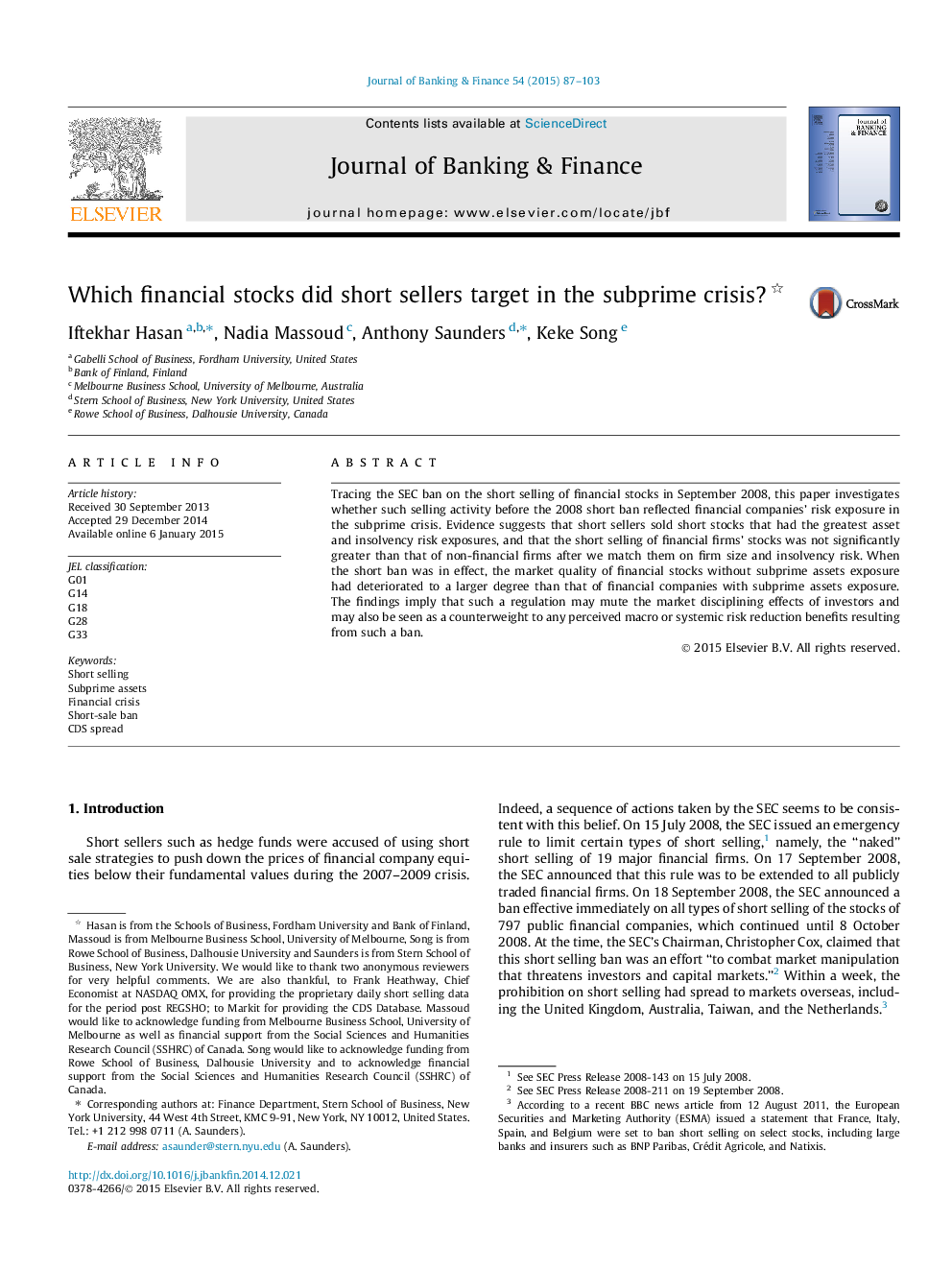| Article ID | Journal | Published Year | Pages | File Type |
|---|---|---|---|---|
| 5088656 | Journal of Banking & Finance | 2015 | 17 Pages |
Abstract
Tracing the SEC ban on the short selling of financial stocks in September 2008, this paper investigates whether such selling activity before the 2008 short ban reflected financial companies' risk exposure in the subprime crisis. Evidence suggests that short sellers sold short stocks that had the greatest asset and insolvency risk exposures, and that the short selling of financial firms' stocks was not significantly greater than that of non-financial firms after we match them on firm size and insolvency risk. When the short ban was in effect, the market quality of financial stocks without subprime assets exposure had deteriorated to a larger degree than that of financial companies with subprime assets exposure. The findings imply that such a regulation may mute the market disciplining effects of investors and may also be seen as a counterweight to any perceived macro or systemic risk reduction benefits resulting from such a ban.
Related Topics
Social Sciences and Humanities
Economics, Econometrics and Finance
Economics and Econometrics
Authors
Iftekhar Hasan, Nadia Massoud, Anthony Saunders, Keke Song,
